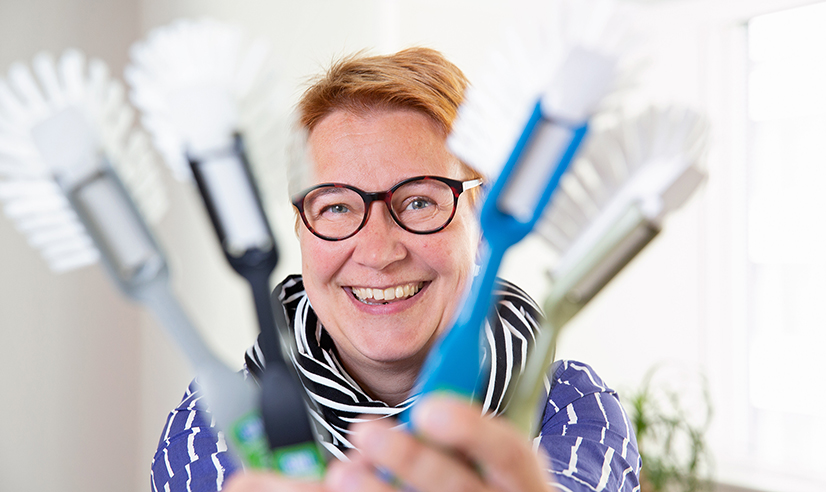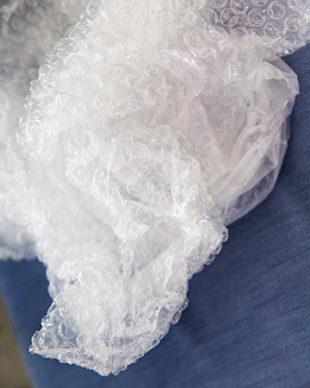Companies to be advised on how to sort plastic packaging

A completely new job description was created in Finland in April, when Katja Laitinen from The Finnish Plastics Recycling Ltd, the producer organisation responsible for the recycling of plastic packaging, was appointed as a recycling coach.
“My job is to encourage companies to recycle their plastic packaging. Recycling needs to be stepped up, and the implementation requires the involvement of the entire packaging value chain, from manufacturing to reuse, and consumers as well as businesses,” Laitinen describes her new responsibilities.
Consumers can recycle all plastic packaging together, but companies need to sort it more carefully. In practical terms, this means that companies sort plastic packaging by the different types.
“This allows packaging to go directly to the recycling process without the need for the sorting process, which makes it more cost-effective.”
A suitable collection system for every company
 Companies often produce larger quantities of one or just a few types of plastic. This makes their packaging much easier to recycle than consumers’ miscellaneous plastic packaging.
Companies often produce larger quantities of one or just a few types of plastic. This makes their packaging much easier to recycle than consumers’ miscellaneous plastic packaging.
As a recycling coach, Laitinen assesses the types of plastic packaging that companies produce.
“We also discuss what sort of collection system is appropriate for each company and who transports the sorted plastic packaging to the terminals. Plastic’s place is in recycling.”
There are two ways to recycle B2B packaging. In accordance with the producer responsibility legislation, The Finnish Plastics Recycling Ltd receives, free of charge, recyclable plastic packaging waste from companies at more than 60 contract terminals across Finland. Alternatively, companies can agree on the collection of used plastic packaging directly with waste management companies.
Room for improvement
Consumers are already good at collecting and sorting their plastic packaging. Katja Laitinen hopes to encourage similar enthusiasm in companies.
“Companies produce and collect the most plastic packaging but they could still do more.”
Shrink film, for example, has been recycled for a long time, as it is easy to collect and turn into tight bales. Different types of bottles and canisters are the ones currently causing problems since they are more difficult to collect as they take up more space.
 Laitinen would also like to encourage companies to reuse more materials, as clean packaging plastics can easily be used in material recycling.
Laitinen would also like to encourage companies to reuse more materials, as clean packaging plastics can easily be used in material recycling.
“Clean and high-quality plastic packaging waste can be used as raw material in a variety of products. Familiar examples include the plastic bags used in supermarkets, which are made of recycled raw material, but using recycled plastic should be more common for other products as well.
Katja Laitinen mentions Sini cleaning products and Heti cleaning product packaging, all made from recycled plastic, as great examples.
The first of her kind
Recycling coach Katja Laitinen is very familiar with recycling, even if her job title is brand new.
“I have 20 years of experience from different industries in creating customer-specific service solutions and improving sorting skills. I have a master’s degree in environmental engineering, and I think I was one of the first to achieve that, too. I am a born developer,” says Laitinen.
She says that meeting with customers is the most rewarding aspect of being a recycling coach.
“I like solving different problems, and that is exactly what I do when I visit companies.”
Laitinen intends to develop procedures and concepts for different kinds of companies so that they can be sure to recycle their plastic packaging in the correct way.
The Finnish Plastics Recycling Ltd’s reception terminals for companies can be found at www.uusiomuovi.fi
Well done, plastic!
– More than 50% of non-deposit consumer packaging is made of plastic. *
– The weight of plastic packaging has been reduced by an average of 28% per packaged product over the past few years. If there were no plastic, the weight of the packaging would be quadrupled and the volume of waste would increase by 150%.
– The recycling rate for plastic packaging must reach 50% by 2025.
More information in Finnish: www.uusiomuovi.fi/kierratysvalmennus
* Source: Finnish Packaging Recycling RINKI Ltd